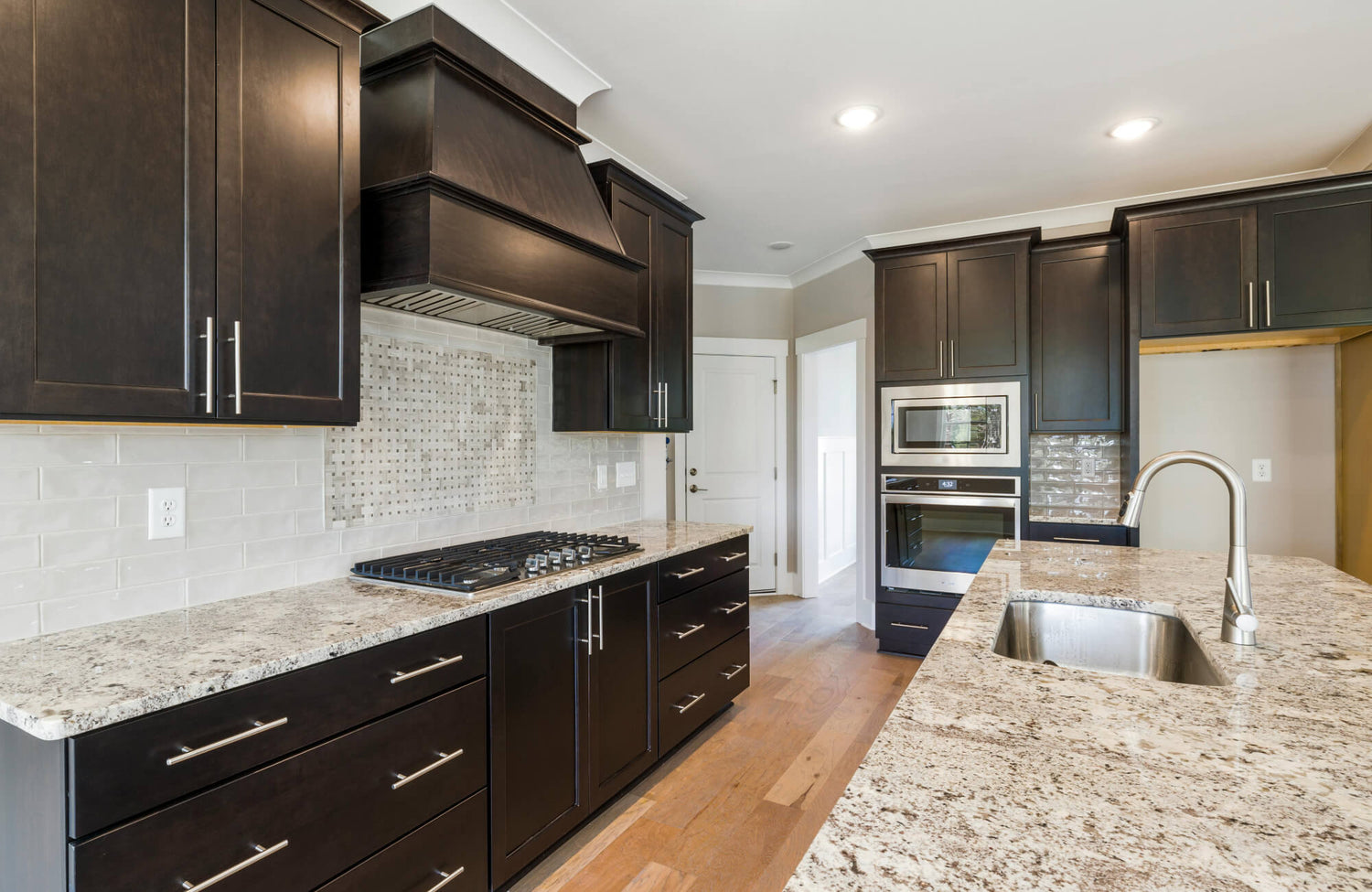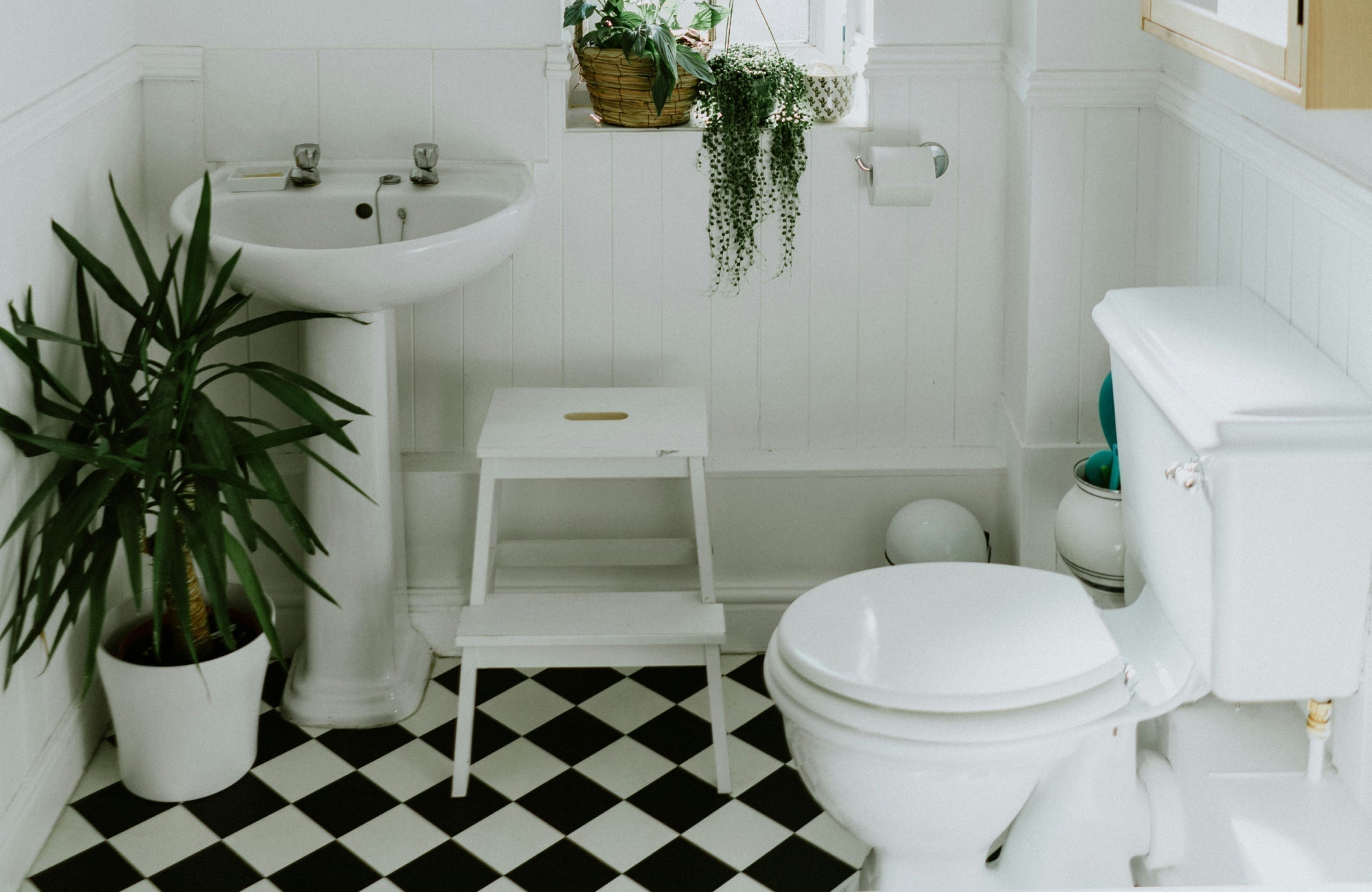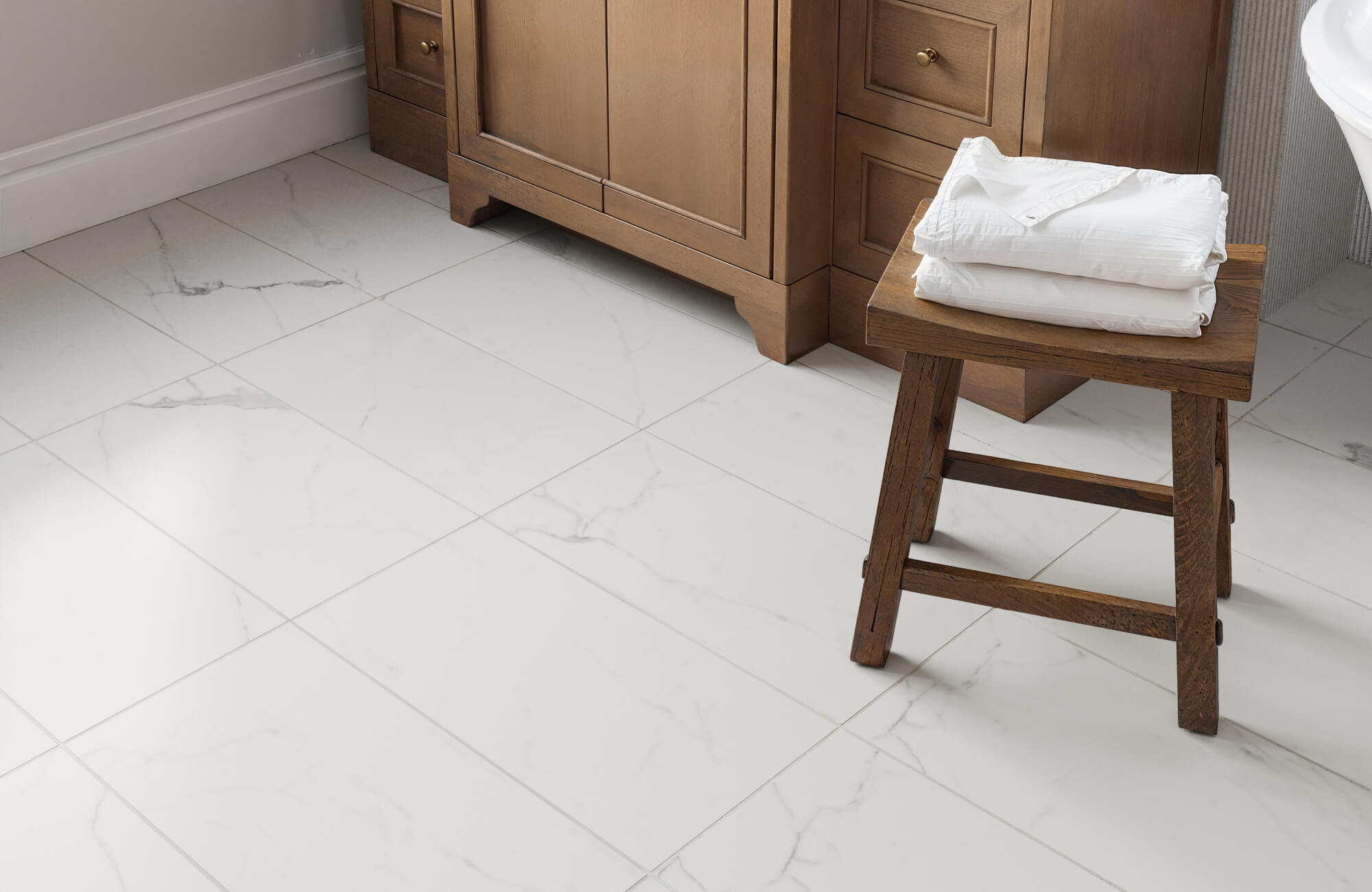Renowned for its timeless elegance and luxurious appeal, marble has graced homes, public spaces, and monuments for centuries, showcasing its enduring beauty and sophistication. Its opulence and unique veining patterns make it a coveted choice for flooring, countertops, and wall cladding. But how long does this exquisite material truly last? While marble’s durability is undeniable, its lifespan is influenced by various factors, including the type of marble, installation quality, and maintenance practices. This comprehensive guide delves into the longevity of marble tiles, exploring the factors affecting their lifespan, care and maintenance tips, and alternatives like marble-look porcelain tiles.

How Marble Forms and Its Varieties
Let’s first examine the geological process that creates marble, explore its many varieties beyond the well-known types, and understand the physical properties that make it a timeless favorite in architecture and design.
Marble Formation and Composition
Limestone or dolomite, sedimentary rocks primarily composed of calcium carbonate, are subjected to immense heat and pressure deep within the Earth's crust. This metamorphism recrystallizes the original mineral grains, resulting in the distinctive interlocking crystalline structure of marble. The absence of impurities often yields the pure white marble prized for its classic beauty, while the presence of other minerals, such as iron oxide, clay, or graphite, creates a vast array of colors and veining patterns.
Types of Marble
The world offers a diverse palette of marble types, each with its own unique characteristics. Carrara marble, quarried in Italy, is celebrated for its pristine white color and delicate gray veining. Calacatta marble, also from Italy, boasts a striking white background adorned with bold, dramatic gold or gray veins. Statuario marble, another Italian treasure, is characterized by its luminous white hue and subtle, ethereal veining. Other notable varieties include Emperador marble from Spain, known for its rich brown tones and fine veining, and Verde Alpi from Italy, which features deep green hues and contrasting light streaks. These are just a few examples of the many marble varieties available, each possessing its own allure and charm.
Marble's Inherent Properties
Beyond its aesthetic appeal, marble possesses inherent properties that contribute to its enduring popularity. Its hardness and density make it resistant to scratches and wear, ensuring its longevity in busy areas. Marble's excellent heat conductivity also makes it a desirable choice for kitchen countertops, as it helps to dissipate heat from hot pots and pans. Moreover, marble's ability to be polished to a mirror-like finish enhances its luxurious appearance and creates a sense of opulence in any space. Moreover, marble's ability to be polished to a mirror-like finish enhances its luxurious appearance and creates a sense of opulence in any space.

Durability and Lifespan of Marble Tiles
Marble's natural hardness, derived from its crystalline structure, is a key factor in its durability. The Mohs scale of mineral hardness rates marble at around 3 to 4, indicating its resistance to scratching by common household items. However, while marble can withstand everyday wear and tear, it's not impervious to damage. Sharp objects like knives or metal cookware can leave scratches on marble surfaces, emphasizing the importance of using cutting boards and trivets. Several factors influence the lifespan of marble tiles:
Quality of Marble
The quality of the marble itself plays a crucial role. High-quality marble with a dense, uniform structure tends to be more durable than marble with visible cracks or impurities. Impurities can weaken the stone and make it more susceptible to staining and etching. Therefore, investing in high-grade marble tiles is essential for long-term durability.
Installation Techniques
Proper installation is another critical factor in ensuring the longevity of marble tiles. The tiles must be installed on a level, stablelevel, stable substrate using the appropriate adhesivecorrect adhesives and grouts designed for natural stone. Failure to adhere to these guidelines can lead to cracking, chipping, or even delamination of the tiles. In addition, expansion joints should be incorporated to accommodate movement in the substrate, preventing stress on the tiles. Moisture barriers and underlayment can further enhance performance, especially in high-moisture areas. Professional installation by experienced tile setters is highly recommended.
Wear and Tear
The level of wear and tear and the specific application of marble tiles significantly impact their longevity. Areas with high wear and tear, such as entryways and hallways, will experience more wear than those with less intense usage, such as bedrooms or living rooms. Kitchen countertops and bathroom floors are particularly susceptible to stains, scratches, and etching due to exposure to water, acidic substances, and heavy use. Regular maintenance and sealing are essential to protect these surfaces.
Maintenance and Cleaning
Marble is a porous stone and can absorb liquids and stains. Proper cleaning is crucial to preserving the marble's appearance and preventing deterioration. Regular sweeping and mopping with a pH-neutral cleaner will remove dirt and debris, while spills should be cleaned up promptly to prevent staining. Sealing marble tiles also creates a protective barrier that repels liquids and stains, making cleaning easier and extending the tile's lifespan.
Environmental Factors
Exposure to extreme temperature fluctuations can cause expansion and contraction, leading to cracks. High humidity levels can contribute to the growth of mold and mildew, which can damage the marble. Harsh chemicals, such as bleach or acidic cleaners, can also etch the marble surface. To minimize these effects, it's important to maintain a stable indoor environment and use mild, pH-neutral cleaners for routine maintenance.
High-quality marble, with a dense and uniform structure, generally lasts longer and resists staining and etching better than lower-grade options. With proper installation on a stable substrate and appropriate adhesive, marble tiles can maintain their beauty for decades. Regular maintenance, including sealing and cleaning, also helps protect the stone from stains and deterioration. Marble's lifespan can be extended significantly with careful attention to its care and environment, making it a durable and timeless investment for any space.

Marble Tile Maintenance
Maintaining the elegance of marble tiles requires consistent, thoughtful care. From cleaning and stain removal to sealing and polishing, each step plays a vital role in preserving the stone’s natural beauty and strength. A proper maintenance routine can significantly extend the lifespan of your marble surfaces. While these general tips are helpful, always follow the manufacturer’s recommendations for both tiles and grout to ensure optimal results.
Cleaning Practices
Regular cleaning is essential to maintain the beauty and longevity of your marble tiles. As previously mentioned, for routine cleaning, use a mild, pH-neutral detergent specifically formulated for marble. Avoid harsh chemicals, acids, or abrasive cleaners that can damage the stone. You can mix a small amount of detergent with warm water and gently wipe the surface with a soft, damp cloth. Rinse thoroughly with clean water and dry immediately to prevent water spots. For stubborn dirt or grime, you can use a soft-bristled brush to scrub gently. Following the manufacturer’s recommendations is essential, and this applies to both tiles and grout.
Stain Removal
Accidents happen, and spills can occur. It's crucial to address stains promptly to prevent them from settling into the marble. For common stains like wine, oil, or coffee, blot up the excess liquid immediately with a clean, absorbent cloth. Avoid rubbing, as this can spread the stain. You can also create a paste of baking soda and water, apply it to the stain, and let it sit for a few hours before gently wiping it away. This is especially helpful in neutralizing acidic stains like lemon juice or vinegar. Remember to always test any cleaning solution in an inconspicuous area before applying it to the entire stain.
Sealing
Sealing your marble tiles is a proactive step to protect them from stains, etching, and other damage. Marble is a porous stone, meaning it can absorb liquids. Applying a high-quality marble sealer creates a protective barrier on the surface, making it easier to clean and preventing stains from penetrating the stone. It is recommended to seal your marble tiles upon installation and reapply the sealer every one to two years, or as needed.
Polishing and Restoration
Maintaining the beauty of marble involves regular cleaning and sealing, but eventually, it may need polishing and restoration. Over time, marble can lose its shine, becoming dull, scratched, or etched. Professional polishing can rejuvenate your marble tiles by restoring their shine and luster. This process also removes a thin layer of the stone to reveal a fresh, polished surface. For deep scratches or chips, more extensive restoration work, such as filling or repairing the damaged areas, may be necessary.

Exploring Porcelain Tiles as a Marble Alternative
Porcelain tiles present a practical and stylish alternative to marble, offering remarkable durability and ease of maintenance. If you're drawn to the look of marble but seek a more resilient and cost-effective option, porcelain marble look tiles might be the solution. They not only mimic the elegance of natural marble but also deliver benefits such as enhanced durability, low upkeep, and a variety of design choices.
Advantages of Porcelain Marble Look Tiles
Crafted from refined clay and subjected to high-pressure firing, porcelain marble look tiles are exceptionally hard and resistant to scratches, stains, and moisture. This manufacturing process imparts remarkable durability, making them suitable for busy areas and wet environments. Their non-porous nature also prevents liquid absorption, reducing the risk of mold and mildew growth.
Unlike marble, marble look porcelain tiles do not require sealing, significantly simplifying maintenance and reducing long-term upkeep costs. Additionally, their resistance to fading ensures they retain their color and appearance over time, even in areas with intense sunlight exposure. This makes marble effect porcelain tiles an ideal choice for both residential and commercial spaces, providing a stylish and practical flooring solution that withstands the test of time. Their versatility in design also allows them to seamlessly complement various interior styles, from modern to traditional, enhancing the overall aesthetic of any setting.
Variety of Finishes
Modern manufacturing techniques have enabled porcelain tile manufacturers to replicate the intricate veining and color variations of natural marble with impressive accuracy. From the classic white Carrara to the bold drama of Calacatta, porcelain marble look tiles come in a wide range of finishes to match any aesthetic preference. Edward Martin’s Aniston 24x48 Matte Porcelain Tile in Calacatta Antico, as shown in the photo above, is an excellent example, offering warm, antique-inspired veining in a matte finish that brings both character and sophistication to contemporary spaces. Matte finishes offer a subtle, sophisticated look, while polished options provide a glossy sheen reminiscent of marble's luxurious shine. Additionally, porcelain marble look tiles are available in an extensive color palette and can mimic the depth and complexity of natural stone, offering versatility for various design styles.
Edward Martin’s AR tool allows you to explore these finishes interactively, so you can see how various styles and textures will appear in your actual space, making it easier to find the perfect match for your design vision.
Cost Comparison
While porcelain marble look tiles frequently offer a cost-effective alternative to marble, pricing can vary based on factors such as size, finish, and brand. High-quality porcelain marble tiles with detailed marble patterns may be priced similarly to mid-range marble options. However, when evaluating the long-term cost of ownership, including installation, maintenance, and potential repairs, porcelain marble look tiles often emerge as a more economical choice. Their low-maintenance nature and durability reduce the need for frequent repairs and upkeep, making them a financially savvy investment over time.
Design Flexibility
Porcelain tiles with a marble look offer exceptional design flexibility, making them ideal for a variety of interior styles. Whether your goal is a sleek contemporary vibe, timeless elegance, or a more rustic charm, these tiles can be tailored to match your aesthetic. Edward Martin’s Aniston 24x48 Matte Porcelain Tile in Calacatta Viola is a prime example, featuring rich, dramatic veining that elevates any space with a sophisticated edge. These tiles can be installed on floors, walls, backsplashes, and countertops, allowing for cohesive design throughout your home or commercial space. Because porcelain can replicate many types of marble, you’re free to choose from a broad spectrum of looks without the maintenance challenges that natural stone can bring. Their durability and ease of customization also support more creative layouts such as herringbone, grid, or checkerboard, giving you the freedom to personalize your design.
Environmental Impact
Compared to natural marble, porcelain marble look tiles have a lower environmental impact due to reduced quarrying and more efficient manufacturing processes. Many are produced using sustainable methods that incorporate recycled materials and support eco-conscious construction. Their long lifespan and minimal maintenance requirements also mean fewer replacements and less waste over time, making them a practical choice for environmentally minded homeowners and designers.
Innovation in Porcelain Tile Technology
Porcelain tile technology has seen remarkable advancements in recent years, significantly enhancing both the visual appeal and performance of marble look tiles. One of the most notable innovations is the development of digital printing technology, which allows manufacturers to create highly realistic designs that mimic the intricate veining and textures of natural marble. This technology enables the production of porcelain marble look tiles with enhanced depth, color variation, and pattern fidelity, making it virtually indistinguishable from authentic marble. Another key innovation is rectified edges, where tiles are mechanically finished to ensure precise dimensions and uniformity. This technology allows for minimal grout lines, contributing to a sleek, contemporary appearance that enhances the overall aesthetics of a space. Additionally, eco-friendly production methods are being adopted, utilizing recycled materials and reducing waste, which aligns with sustainable building practices.
Installation and Maintenance
Installing porcelain marble look tiles follows a similar process to that of standard ceramic tiles and can be completed by either a skilled DIYer or a professional tile installer. The tiles are typically set on a prepared substrate using thin-set mortar and spaced evenly with tile spacers for even grout lines. Once positioned, grout is applied to fill the joints and then sealed to protect against staining. Porcelain marble look tiles are low-maintenance and can be easily cleaned with mild detergent and water. Unlike natural marble, they resist etching and tolerate everyday household cleaners without damage. Before beginning your project, consider ordering Edward Martin’s 4" x 4" samples to evaluate the tiles’ quality and visual appeal in your actual space. This hands-on approach helps ensure you choose the right tile for both installation and long-term care.
Making the Right Tile Choice for Your Space
Marble tiles, with their timeless beauty and luxurious appeal, have graced homes and public spaces for centuries. When installed correctly and maintained diligently, marble can indeed endure for generations. However, factors such as marble quality, installation methods, usage patterns, and environmental conditions can impact its lifespan. To preserve the splendor of marble tiles, regular cleaning, sealing, and professional polishing are essential.
For those seeking the aesthetic appeal of marble without the intensive care requirements, porcelain marble look tiles offer a compelling alternative. With advancements in manufacturing technology, porcelain tiles can now beautifully mimic the intricate veining and color variations of natural marble. Their exceptional durability, stain resistance, and low maintenance make them a practical choice for various settings. Ultimately, the decision between marble and porcelain marble look tiles depends on individual preferences, lifestyle, and budget. By carefully considering the factors discussed in this guide, you can make an informed choice to create a space that reflects your style and meets your functional needs.







